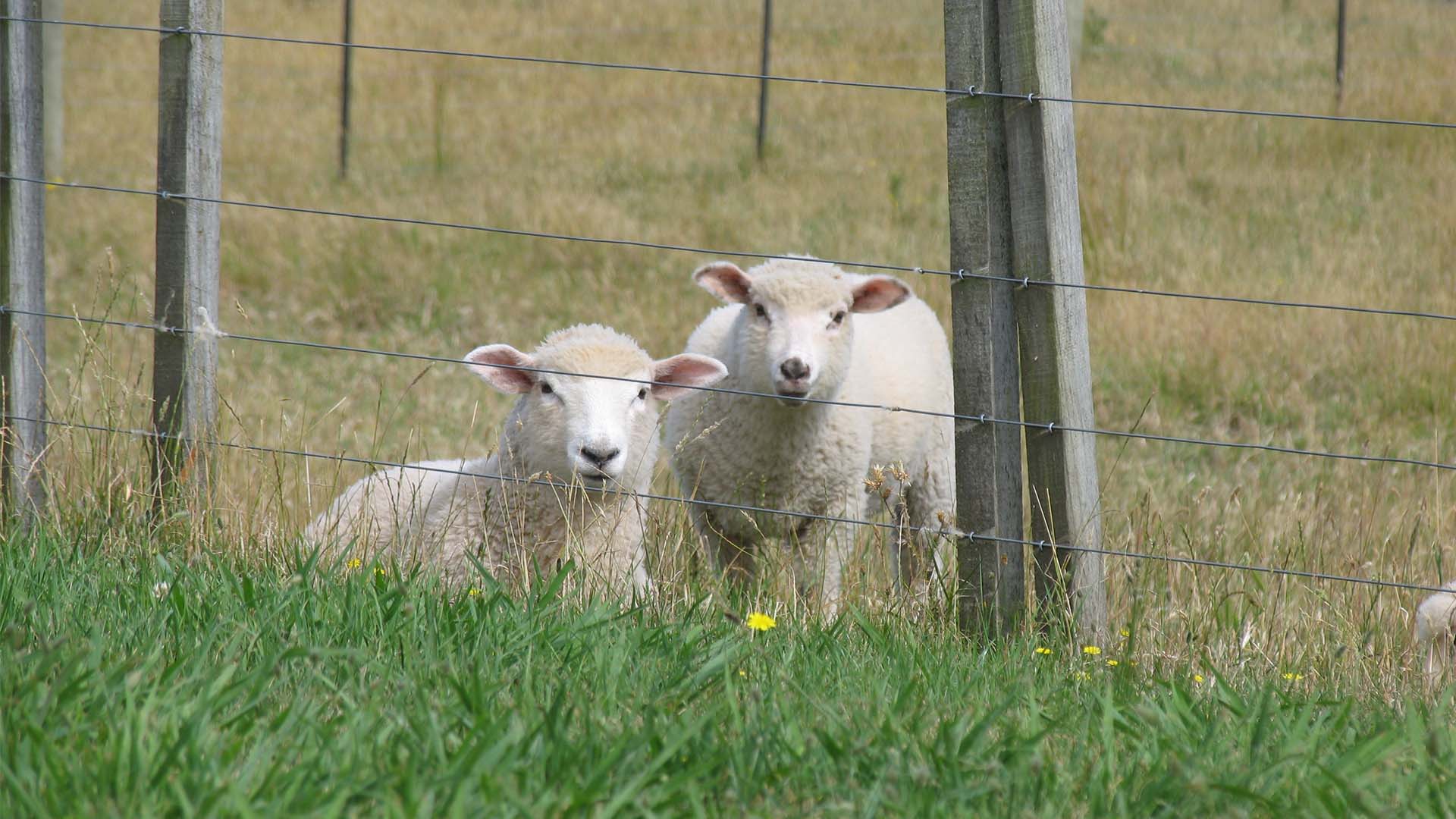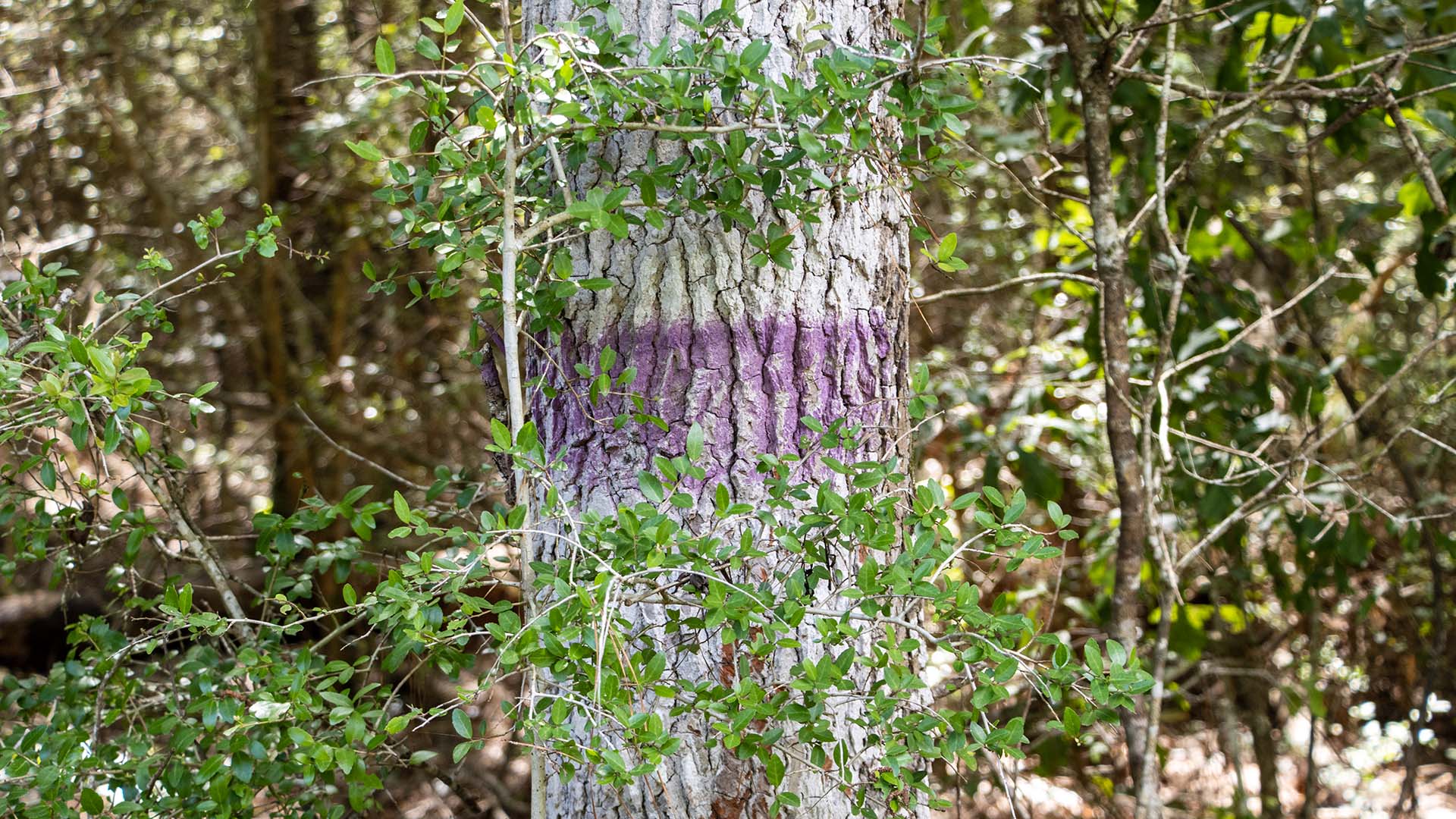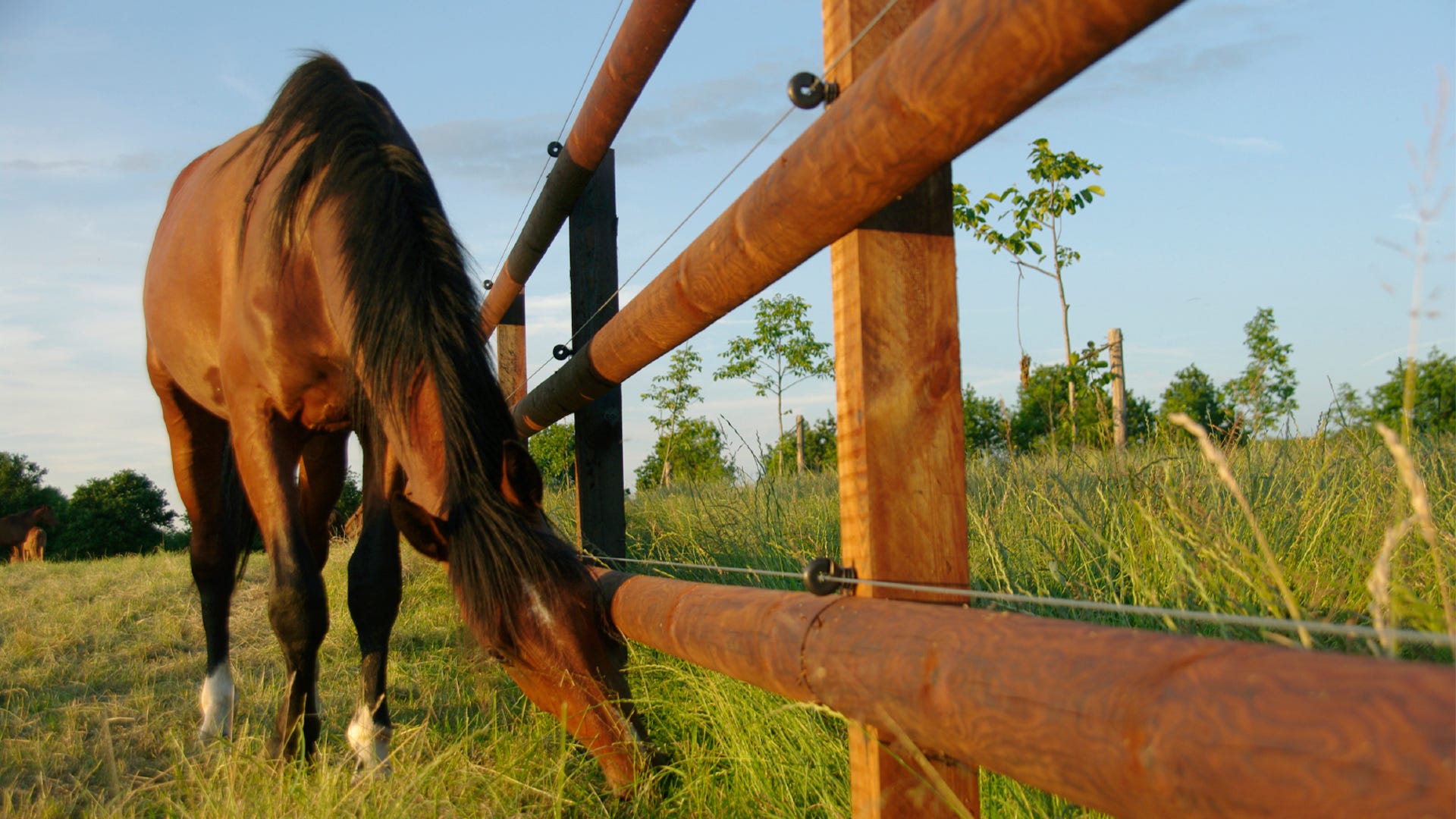
Posts are the backbone of any fencing system. Your fence posts support the fencing itself, and because of that, need to be made of a durable material and installed properly to do their job.
While preparing to construct your fence, you’ll have some choices to make about the posts. By understanding the specific functions of your new fence, you’ll find your decisions are easier to make. Consider these questions:
- Will the fence be permanently installed?
- What is the general layout of the fence?
- What additional features are required? Consider gate placement, corner placement and terrain the fence encloses.
With those aspects in mind, it’s important to understand that your fence system may require several different types of fence posts:
- Corner posts, which are usually made from wood, must be set deeper than in-line posts to withstand the strain of supporting the fence line. These posts require deep installation (about equal to their above ground height) to help support them as they stand against the strain of a taut fence line.
- In-line posts will be needed between corner posts to support the fence wire and keep it from sagging. In-line posts do not need to be installed as deeply as corner posts, but should still be firmly set into the ground.
- Temporary and portable posts, which are smaller and lighter, might be used to section off a pasture into smaller areas for short periods of time. These posts are easy to install, often pushed into the soil quickly with a step-in flange.
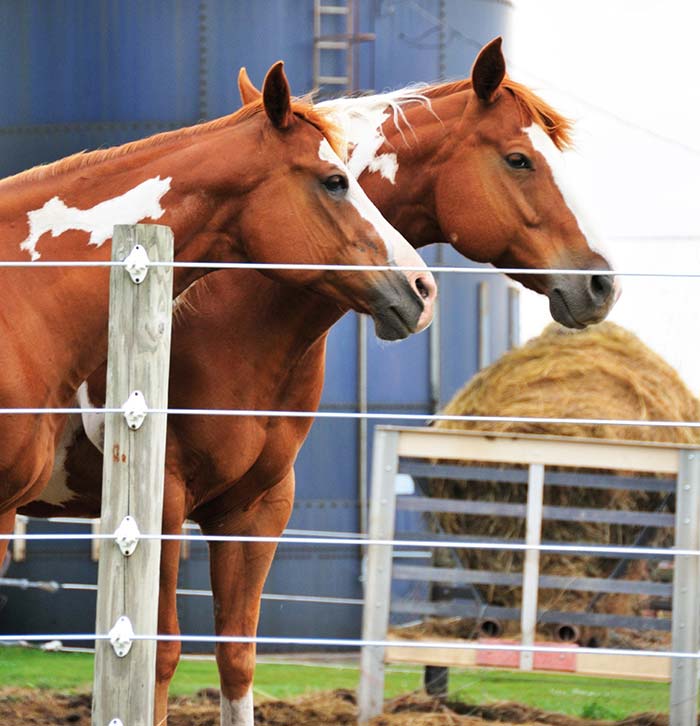
Fence post spacing varies depending on how the fence will be used. Most posts that will carry an electric fence should be placed 12 to 20 feet apart.
Fence Post Types
Types of fence posts available for use include:
- Wood Posts – For use as a corner posts, it’s recommended to use a wood post at least 8 feet in length. Set 24 inches to 48 inches in the ground for best results and more than 48 inches in sandy or rocky soil. Also suitable for gate and in-line posts.
- Steel Rebar or Fiberglass Rod Posts – These posts are ideal for temporary and portable fencing needs, such as rotational grazing or temporary corrals. Serving identical purposes, fiberglass and steel posts are equally useful in the pasture. Fiberglass rods are considered more flexible, but are also require gloves for handling. Both these posts can also be used as in-line posts or spacers.
- T-Posts – With a variety of easy-to-use accessories, t-posts can be used with permanent or semi-permanent fences. In particular, they work great as in-line posts. T-posts require a special handheld post pounder to drive them into the ground.
- Step-in Posts – An inexpensive option for temporary fencing, step-in posts are lightweight and small, making them perfect for rotational grazing systems. They also work well as in-line posts and require no clips or insulators.
- Pigtail Posts – These posts are ideal for use in cross-fencing for managed intensive grazing systems and feature a lightweight, portable design. Loops at the top of these posts resemble a pig’s tail for easy line attachment. They also require no clips or insulators.
| RECOMMENDED POST SPACING | |
|---|---|
| Fencing Parameters | Spacing |
| Woven Wire | 14-16 |
| Barbed Wire | 12-14 |
| Electric | 12-20 |
| High Tensile, level terrain | 30-90 |
| High Tensile, difficult animals, rolling terrain | 15-20 |
| Poly tape and poly wire | 12 |
| Board | 8 |
| Corrals | >6 |
Wood Fence Posts
When selecting a wooden fence post, there are a few things to consider. First off, remember that wooden fence posts will decay over time. For the most part, untreated wood will decay in just a few years, so you want to look for wood that’s been pressure-treated with chromated copper arsenate (CCA). This treatment slows the decay, often extending the life of a fence post from years to decades.
Of course, not all CCA treated wood is the same. Look for a measurement on the post that reads 0.4 lb/ft3 or higher. This indicates the amount of CCA applied per cubic foot of lumber. Anything lower will break apart fairly quickly.
The other consideration when selecting wood fence posts is the type of tree the post is derived from. Pine is the most common and, when pressure treated, can last for up to 30 years. Other long-lasting types are Redwood and Sweetgum.
Some tree species don’t need to be treated and can last up to 25 years. Primary among them are Black Locust and Osage Orange.
| WOOD FENCE POST: LIFE EXPECTANCY (IN YEARS) | ||
|---|---|---|
| Type of Wood | Untreated | Treated |
| Ash | 3-7 | 10-15 |
| Aspen | 2-3 | 15-20 |
| Bald Cyprus | 7-15 | 20-25 |
| Balsam Fir | 4-6 | 10-15 |
| Basswood | 2-3 | 15-20 |
| Beech | 3-7 | 15 |
| Birch | 2-4 | 10-20 |
| Black Locust | 20-25 | Not necessary |
| Box Elder | 2-7 | 15-20 |
| Butternut | 2-7 | 15-20 |
| Catalpa | 8-14 | 20-25 |
| Cedar | 15-20 | 20-25 |
| Cotton Wood | 2-6 | 10-15 |
| Douglas Fir | 3-7 | 15-18 |
| Elm | 4 | 15 |
| Hackberry | 3-7 | 10-17 |
| Hemlock | 3-6 | 10-25 |
| Hickory | 5-7 | 15-20 |
| Honey Locust | 3-7 | 10-20 |
| Larch | 3-7 | 10-20 |
| Maple | 2-4 | 15-20 |
| Oak (red) | 5 | 15 |
| Oak (white) | 10 | 15-20 |
| Osage Orange | 20-25 | Not necessary |
| Pine | 3-7 | 25-30 |
| Red Cedar | 15-20 | >20-25 |
| Red Mulberry | 7-15 | 15-30 |
| Redwood | 10-15 | 20-30 |
| Sassafras | 10-15 | 20-25 |
| Spruce | 3-7 | 10-20 |
| Sweetbay | 2-6 | 10-20 |
| Sweetgum | 3-6 | 20-30 |
| Sycamore | 2-7 | 20-25 |
| Tamarack | 7-10 | 15-20 |
| Tupello (black) | 3-7 | 15-20 |
| Willow | 2-6 | 15-20 |
| Yellow Poplar | 3-7 | 20-25 |
| Information originally developed by UGA Extension | ||
Whether treated or not, avoid using “landscape timbers” for fence posts, which are often unlabeled and not cut to support fence tension.
Metal Fence Posts
At first thought, it may seem like using metal fence posts for your fencing needs is a perfect solution for your fencing needs. In some cases, such as an ornamental fence or as part of a chain link fence, that’s perfectly fine. However, in nearly every other instance metal fence posts are inferior to wooden ones, especially as corner posts.
Though metal is strong and durable, it isn’t as flexible as wood. Once it’s bent, it stays bent. When it comes to fencing, you want posts that are a bit flexible and return to their original shape after being stressed. If you’re installing a fence to be used with livestock, then chances are that those animals will test that fence by pushing it to its limit. If that happens with a metal fence post, there’s no going back – you’ll need to replace it.
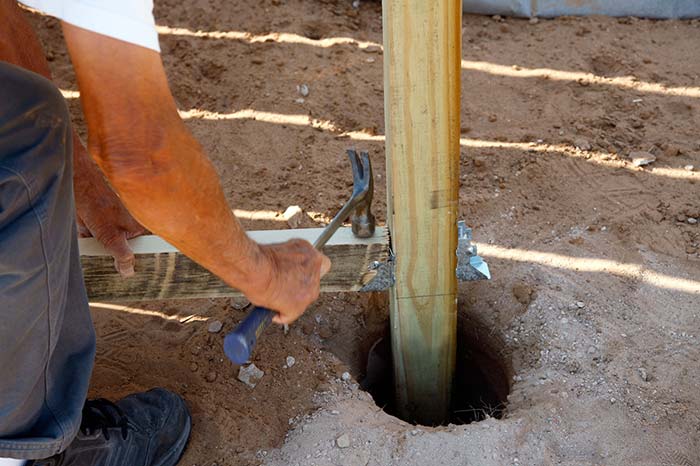
Corner posts should be sunk as deep into the ground as their above ground height. In-line posts aren’t under the same stress, so they can be planted shallower.
Your Fence Post Choices
If you’re constructing a fence for your property, let us know about your plans in the comments below or send us pictures the next time you visit Zareba® on Facebook. If you’re looking for ideas and deals on electric fencing components, make sure you sign up for our E-Newsletter!


